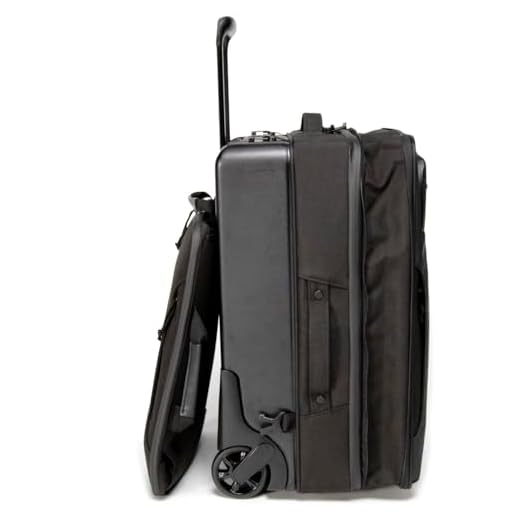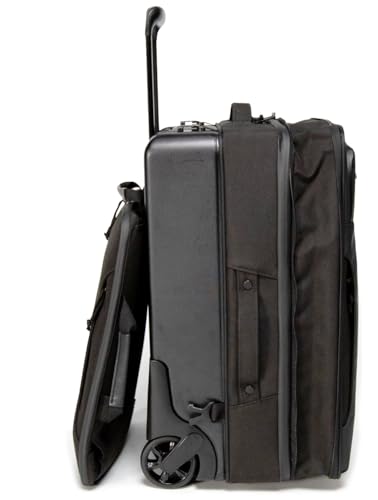







The dimensions of travel bags are typically assessed based on measurements in inches or centimeters. Most carriers enforce strict limits, which generally include a maximum size for checked items and carry-on pieces. These restrictions vary by airline, making it essential to verify specific requirements prior to your departure.
A common standard for checked pieces is a maximum linear dimension of 62 inches (157 cm), calculated by adding the length, height, and depth of the bag. For cabin bags, the usual maximum size is often around 22 x 14 x 9 inches (56 x 36 x 23 cm), though this can vary. Exceeding these limits may incur additional fees or require you to check your item.
Always keep weight limitations in mind as well. The standard allowance for checked items frequently falls between 50 and 70 pounds (23 to 32 kg), contingent on your carrier and ticket type. Understanding these specifications ensures compliance and helps avoid unexpected charges or inconveniences during your travels.
Understanding Airline Baggage Policies
Check the specific restrictions applied by individual carriers. Policies vary widely regarding dimensions, weight allowances, and fees for excess items.
Weight and Size Limits
Most carriers enforce strict limits on weight that typically range from 15 to 50 pounds (7 to 23 kilograms) for checked bags. Understanding your airline’s specific threshold can save you from unexpected charges.
Dimensions are often calculated based on the sum of the longest side plus the width and depth, where standard sizes usually hover around 62 inches (157 cm) for checked items. Carry-on sizes generally do not exceed 22 x 14 x 9 inches (56 x 36 x 23 cm).
Fees and Allowances
Common fees arise for overweight bags, with charges commonly starting at $50 per bag. Carrying additional pieces can also incur fees. Frequent travelers might benefit from loyalty programs that offer additional perks, including waived fees.
Always check your ticket class, as certain tiers come with complimentary allowances, potentially affecting your overall travel budget.
Measuring Dimensions: Height, Width, and Depth
To ensure compliance with airline restrictions, accurate dimension calculations are critical. Measure the height from the base to the top of the bag, including any wheels or handles that extend beyond the main body. For width, determine the distance from one side to the opposite side at the widest point, and depth should reflect the thickness from front to back. Use a measuring tape and round each measurement to the nearest inch or centimeter for precision.
Some airlines have specific restrictions on size, so it’s advisable to check the maximum dimensions accepted for carry-on items before traveling. Knowing these limits aids in avoiding unnecessary fees and complications at the airport. For those looking for suitable options, explore the best luggage to fit under an airplane seat.
Weight Limits and Their Implications
Travelers should always verify the specific weight restrictions imposed by their chosen carrier to avoid unexpected fees or delays at the airport. Adhering to these limits not only ensures smoother boarding but also enhances safety and efficiency during flight operations.
Common weight ceilings typically range from 20 to 30 kilograms for checked items and around 7 to 10 kilograms for carry-ons. Exceeding these thresholds can incur substantial charges, which vary by airline and destination.
- Check the weight policy when booking tickets to ensure compliance.
- Consider using a portable scale to weigh items before departure.
- Opt for lightweight materials in packing to maximize allowance.
Beyond cost implications, excess weight can disrupt balance in cargo holds, affecting aircraft performance. Selecting items that optimize your allowance is critical. For instance, investing in a high-quality, versatile bag, such as a best luxury work bag that converts to a backpack, may enhance your packing strategy.
Understanding the link between weight restrictions and travel efficiency can lead to more enjoyable experiences. Proper packing techniques and strategic selections allow for feasible journeys without the stress of penalties or logistical hassles.
Carry-On vs. Checked Bags: Measurement Differences
Carry-on items typically allow dimensions around 22 x 14 x 9 inches (56 x 36 x 23 cm), while checked alternatives usually offer larger sizes, often exceeding 62 linear inches (158 cm total when height, width, and depth are combined).
Size Restrictions
Airlines enforce strict size limits for carry-on bags; exceeding these will likely require gate-checking the item. Checked bags, conversely, can vary significantly in maximum dimensions, contingent on fare class and route.
Practical Recommendations
Always measure your carry-on prior to departure to avoid last-minute issues. For checked options, consider the potential for additional charges by confirming maximum allowable dimensions and weight in advance. Reducing overall weight can also mitigate fees during check-in, as many airlines impose strict weight thresholds.
Proper Measurement of Your Bags at Home
Utilize a flexible measuring tape to accurately capture the dimensions of your travel items. Ensure the bags are fully packed, as the size may vary when empty. Measure height first, followed by width, and lastly depth to acquire precise parameters.
| Dimension | Description | Measurement Tips |
|---|---|---|
| Height | The vertical distance from the base to the top. | Stand the item on its wheels if applicable. |
| Width | The distance from one side to the other. | Measure across the front, avoiding protruding handles. |
| Depth | The distance from front to back. | Ensure no items compress the sides during measurement. |
After obtaining the dimensions, double-check against the airline’s specified criteria. Mark measurements neatly for clarity. It is prudent to keep the packing solution organized to facilitate any adjustments if necessary.
For additional equipment needs, consider products like a best pressure washer walnut creek ca for maintaining your travel accessories in top condition.
Consistent practice of this method ensures a hassle-free check-in experience, minimizing unexpected fees or complications at the airport.
Dealing with Oversized or Overweight Baggage
Prioritize checking your airline’s specific regulations regarding excess size and weight to avoid unexpected fees. Most carriers implement strict limits, and charges can escalate quickly. Consider weighing and measuring your belongings before heading to the airport. A reliable scale and a tape measure can help ensure compliance with stipulated dimensions and weight restrictions.
If it appears that your bags exceed set limits, explore options such as repacking items into multiple smaller pieces or utilizing vacuum-sealed bags to reduce volume. Additionally, some airlines may allow you to move items between checked and carry-on bags to optimize weight distribution.
Inquire about purchasing additional baggage allowance at a reduced cost while booking your flight. This can often be more economical than paying overweight fees at the airport. Alternatively, find out if the airline offers a loyalty program, where accumulating points may provide benefits, including extra weight limits.
Consider mailing items to your destination if your belongings are non-essentials. This can sometimes be cheaper than dealing with added charges for oversized items. Look into courier services that specialize in shipping luggage, which might offer a convenient solution.
In cases where excess baggage cannot be avoided, prepare for potential delays at check-in or gate, as handling oversized items may take longer. Arriving earlier than necessary can reduce stress. Keep all receipts for additional baggage fees, as they may be reimbursable under certain circumstances if your travel is necessitated by a service issue.







